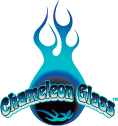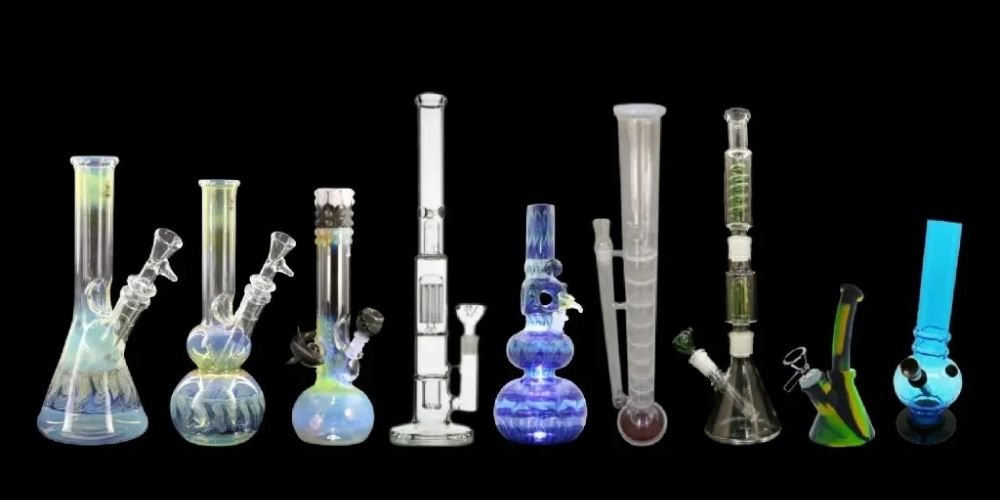Your Guide to Types of Bongs and their Shapes
More and more people are starting to partake in cannabis culture as marijuana legalization continues its impressive and long overdue march forward. However, even as new options come onto the market, most cannabis enthusiasts still prefer the old standby – a glass water pipe aka a Bong. My question is… Why?
The varieties and features available in modern-day bongs make them the go-to option for blazing. So, if you’re trying to find the best bong for your needs, here’s your guide to bongs, their types, benefits, and the materials used.
What is a Bong?
If you’re someone who’s experienced smoking cannabis, then you probably already know what it is. But for the noob blazers, a Bong is a standalone water pipe meant for a single user as it has a single open mouthpiece. As you inhale, the smoke passes through water which has the effect of filtering particles and cooling the smoke prior to inhalation which offers smoother pulls.
Types of Bongs & Shapes
Though bongs come in different sizes, styles, shapes, and materials to choose from, I’ll focus on the most common ones you will encounter:
Beaker Base Bongs
These models resemble a lab beaker with a test tube sticking out of the side. This design is durable and very stable while in use. Beaker Bongs are by far the most popular shape.
Pros: Stability, the wide base makes it difficult to knock over. Ease of use and cleaning are also pro’s to this basic design.
Cons: Given the angle of the bowl and the shape of the beaker bottom, some people prefer to tip them back when using for a more even percolation/burn. This can cause them to be less stable than a piece that sits flat during use.
Classic (Round/Bubble) Base Bongs
This version is like a beaker bong but with a rounded bottom instead of a tapered one.
Pros: Tall piece that sits flat, and has a large rounded bottom for good water volume, and even percolation when standing straight up.
Cons: You have to be a little more careful with a classic round bottom bong due to the base sometimes not being quite as thick as the walls, so care should be exercised when moving the piece.
Straight Bongs
These models resemble a giant test tube since they’re straight from top to bottom. They are the simplest design available in the market. It also has a bowl poking out of the side.
Pros: Easy access, straight design, usually has a thick wide base for stability, many times like in the example picture, you can fit multiple percolators or gridded discs in this case for more percolation on your hit, giving a smoother hit.
Cons: Depending on how many chambers or percolators the piece has, it may be more difficult to clean these types of pieces, also with lots of percolation and filtration, you may end up losing some of the flavor of your smoke.
Percolator Bongs
If you want an even smoother smoking experience, you can’t go wrong with a percolator. ‘Perc’ Bongs double cool the smoke before it reaches your mouth by adding a second percolation apparatus between the base percolation chamber and the mouthpiece.
There are many percolator designs, some of the most popular are Tree Percs, Honeycomb Percs, Fritted Disc Percs, and Showerhead Percs. Many times these pieces will come with an ice catch pinch at the top to further cool your smoke.
Pros: Similar to the straight scientific pieces, but with multiple different percolation chambers, usually with a different type of perc in each. These Percolator Bong pieces can give you exceptional smoothness due to their ability to break the smoke into smaller bubbles, increasing surface area exposed to the water, which can cool the smoke as well as filter out some of the harshness, allowing you to take bigger rips.
Cons: Percolator bongs can sometimes be a little more difficult to get clean due to the multiple chambers and percolators. Also, the increased filtration can remove some of the flavor or active ingredients in your smoke, making it smoother, but potentially requiring more to get the desired effect.
Ice Trap Bongs

Regular use marijuana enthusiasts will appreciate the cooling effect provided by an ice trap/pinch bong. These devices are typically near the mouthpiece and appear to be cone-shaped indentations that create a ‘stop’ for ice while still allowing your smoke to pass over the ice. Ice Pinches are sometimes added to Percolator bongs as well for even more cooling of your smoke.
Pros: Ice Trap Bongs cool the smoke significantly, for a much smoother, cooler hit.
Cons: One downside to using Ice Trap bongs, is that after a little while the ice will begin to melt, and the melted ice will raise the water levels of your bong to a point that it may need to be dumped out during your session to return it to proper functional water levels.
Coil Condenser Bongs

Speaking of cool smoke, Bong makers have adapted a scientific apparatus from Labware called a Coil Condenser. A Coil Condenser is a corkscrew-shaped (coiled) smoke path that is encapsulated and bathed in glycerin.
The section or the whole bong is placed in your freezer until you are ready to smoke. As you inhale, the smoke passes through the path that is bathed in super-chilled glycerin. The coil exchanges the heat of your smoke with the cool of the glycerin for an amazingly chilled and re-humidified puff.
Pros: Extremely cold and smooth hits, due to the smoke passing through the chilled glycerine coil before you inhale it.
Cons: Can be a little more difficult to clean the coil, and the coil needs to be placed in a freezer before use to achieve the desired effect.
Bong Materials
The three primary materials used are acrylic (i.e., plastic), glass, and silicone. Here’s a quick overview of each type:
Acrylic
Since acrylic is a form of plastic, it’s not actually very good for smoking cannabis. First, acrylic will absorb smoke, making it impossible to clean after a few sessions. Second, plastic can leach chemicals into water and the marijuana itself; making smoking out of these bongs more hazardous to your health.
So why do people smoke through plastic? It is cheap and brightly colored. Is it really worth it?
In my opinion, no. You are not only ruining the flavor of a good strain here but you are also compromising your health. If it’s passed around at the next party are you going to take a pull? Yeah, probably…
Pros: Cheap, and easy to find.
Cons: Made of plastic, not good for heat, potentially hazardous to your health, can’t get it totally clean after use, taste can be affected negatively after a few uses.
Glass
Pretty much anywhere you go for your cannabis supplies, you can find abundant glass bongs. While the design may change, its function remains the same. Glass is most preferred for a few, but good reasons: it’s durable, does not impart any taste to your strain, and they are easy to clean.
Glass Bongs can also be functional art. Ok, maybe not that machine-molded straight clear bong with a huge obnoxious logo label as it’s only decoration (China), but a handmade tube with colorful adornments is definitely a unique piece that will enhance your smoking pleasure.
Pros: Glass bongs provide the best taste with tight bonded polished surfaces that can be cleaned over and over with no issues. Can have beautiful artwork from gold and silver fuming, glass colors, and even UV and CFL color changing glass.
Cons: Glass tubes and pipes can break if you drop them.
Silicone
While acrylic is cheap and rugged, silicone is even more affordable and virtually indestructible. When using a silicone bong, you’ll notice that it’s much softer and more malleable than a plastic water bong. It’s also highly heat resistant, so you can reuse it over and over again.
The main problem with silicone is that, though these are better than acrylic bongs, they do not have the same feel and aesthetic as glass bongs. Yes, they are somewhat heat resistant, but reusing them for the nth time may not let you enjoy the original flavors of your chosen leaf. Plus, since glass is the gold standard, there are fewer design options available in silicone.
Silicone is a relatively new material to the bong market. Machine-made and inexpensive, silicone bongs seem to be an excellent alternative, however, in my opinion, the jury is still out. I’ve seen all kinds of claims of ‘platinum cured’ and ‘phthalate free’, but China lies. I don’t buy it. Look no further than some of the chef comments on silicone bakeware testing that found all of the claims made by China to be false.
Pros: Silicone rigs are cheap and very difficult to break, while being fairly heat resistant as well.
Cons: Silicone rigs are hard to clean back to new, and will start taking on the taste of whatever is in it in the long run. It also is not proven to be safe from off-gassing or leaching chemicals from production or heat into your smoke.
Alternative Materials
Although glass, silicone, and acrylic are the most common varieties, they’re not the only options. Some alternatives include:
Ceramic
One issue with ceramic is that you can’t see what’s going on inside. More fragile than glass and much harder to clean since you can’t tell where all the gunk is hidden.
Pros: Can be very artistic due to being made from ceramic and basically painted different colors, although still not as versatile as glass.
Cons: Since it is made from a ceramic clay and then glazed and fired, most of the protection comes from the glaze itself, which can break down with repeated heating, age, and solvents used to clean the piece.
Metal
Mmmmmm mmmmm metal. Tasty! Not. Food and Beverage cans are coated on the inside with a layer of protection so that the product inside does not take on the flavor of the can. Does that metal bong have a liner in it? No. The redeeming aspect of Metal Bongs is they are for the most part indestructible and can be broken down into parts that fit inside one another for a compact travel unit. Make sure to put it in a smelly-proof bag though, or your clothes will smell of burnt cannabis.
Pros: Very tough and difficult to break, sometimes made in pieces for a hide-a-bong style.
Cons: Will absorb the smells from smoking and not be possible to fully clean without scrubbing off the outer layer of the metal itself. Very difficult to get fully clean.
Why do Glass bongs have an edge over other materials?
One reason why Chameleon’s water bongs are so resilient is that they’re made of borosilicate (Pyrex). This material is often used for cookware and lab experiments because it is both thermal and percussion shock resistant. Of course, a drop can still break it. Also, Pyrex has almost zero surface porosity which makes it the safest option to smoke from.
Handmade, colorful ornamented Glass Bongs are a dual threat: they are functionally superior and beautiful. They let you enjoy the original flavors of your herb as they don’t impart any undesirable flavors or tastes, and they look good doing it. You can read about more benefits of glass here.
Bottom Line: How to Choose the Right Bong
Understanding bongs is only the first step. Now you have to figure out which one will work best for your smoking needs. While percolator and multi-chamber units are very good, the price difference between high-end and a simple functional design is a decision for each consumer.
Also, keep in mind that you may need unique bongs for different situations. For example, a silicone one can work well for parties, while a glass bong is best for personal use. You can even consider a travel-sized bong like a Monsoon (The Bong you take along) for vacations.
One of the best ways to choose the best glass bong is to browse through our selection of bongs here. We have almost all the varieties starting from straight designs to multiple chamber styles.





Leave a Reply
You must be logged in to post a comment.